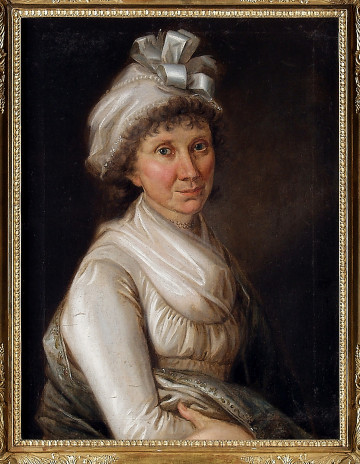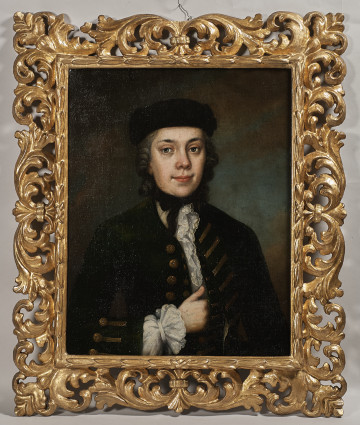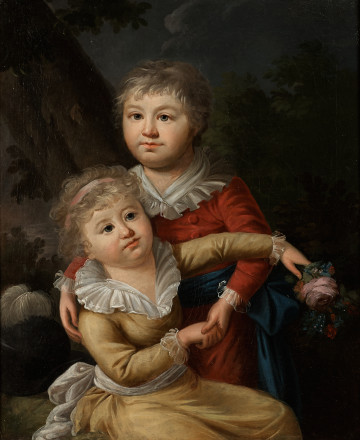
Portrait of Aleksandra Potocka, née Lubomirska
2nd half of the 19th century
Castle Museum in Łańcut
Part of the collection: Money on Polish territory in the Middle Ages
The origins of the Hungarian ducat, also called floren, or forint in Hungarian, are linked to Italian influences. The first Hungarian ruler who started minting ducats was Charles Robert, grandson of Charles II of Anjou, King of Naples. The model for the Hungarian ducat was the gold florin, minted in Florence from 1252. Initially, the Hungarian ducat took over the graphic design of a lily on the obverse and the image of St John the Baptist – the patron saint of Florence – on the reverse. However, the weight of the coin was slightly different; the Hungarian ducat was slightly heavier. Significant changes appeared during the reign of Louis of Hungary, known in Hungary as the Great, the successor of Charles Robert. The lilies were replaced on the obverse by a bipartite shield with the coats of arms of Hungary (four horizontal stripes symbolising the rivers Danube, Tisza, Drava and Sava) and the Angevin family (lilies), while on the reverse St John of Florence was replaced by his native St Władysław. With the accession of the representative of the new dynasty, Sigismund of Luxemburg, to the Hungarian throne, the obverse of the ducats minted during his reign was corrected. The bipartite shield was replaced by a quadrangular one, initially bearing alternately the Hungarian coat of arms and the Brandenburg eagle. After Sigismund gained the title of regent (in 1402), and then King of Bohemia (1419), the eagles were replaced by a Bohemian crowned lion standing on its hind legs.
Hungarian ducats were minted in large quantities mainly in Krzemnica (today Kremnica in Slovakia) and on a smaller scale in Buda and other mints of Hungary at that time. At the end of the 14th century the annual production amounted to about 400 thousand coins. In this situation Hungarian ducats quickly spread across almost the whole Europe. Their popularity was mainly due to their high gold content. Sigismund of Luxembourg was also credited with developing a system of signs identifying the mint and the person responsible for minting coins. These signs were placed on the reverse, on both sides of the figure of St Władysław. This allows us to conclude that the presented coin was struck when Sigismund of Luxembourg was already regent or king of Bohemia. This is evidenced by the Bohemian lions placed on the shield of the obverse coat of arms. It was struck at the mint in Aranyosbánya (today Baia de Arieș in Romania).
Leszek Poniewozik
Author / creator
Dimensions
cały obiekt: diameter: 21,9 mm
Object type
numismatic
Technique
stamp minting
Material
gold
Creation time / dating
Creation / finding place
Owner
The National Museum in Lublin
Identification number
Location / status

2nd half of the 19th century
Castle Museum in Łańcut

3. ćwierć XVIII wieku
Castle Museum in Łańcut

1. ćwierć XIX wieku
Castle Museum in Łańcut
DISCOVER this TOPIC
Museum of King Jan III's Palace at Wilanów
DISCOVER this PATH
Educational path